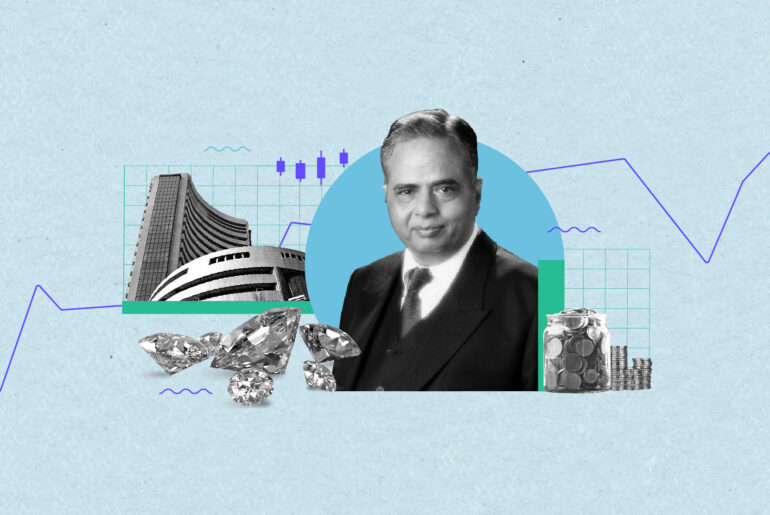Last Updated on Sep 13, 2022 by Aradhana Gotur
Did you know that you can buy or sell stocks, commodities, and currency at a future date at a price that is fixed today? In other words, to agree to buy an instrument tomorrow but at a price that is fixed today itself? This is how F&O trading works.
A lucrative avenue for many, F&O trading, or derivative trading as it is popularly called, can help investors reap attractive returns by reasonably betting on the future price movements of different types of securities. This article delves into what F&O trading is, what its features and benefits are, and requirements towards performing F&O trade.
Table of Contents
What is F&O trading?
Futures and options are contracts wherein you do not buy or sell the underlying security immediately. Instead, you draw up a contract and agree to buy or sell a specified quantity of the security at a predefined date and a predefined price. F&O trading is when you buy and sell futures and options contracts.
Let’s simplify with an example.
Suppose Mr Arun and Mr Verma are investors looking to perform F&O trading. Mr Arun decided to buy 100 units of stock A which Mr Verma owns, after one month at Rs. 200/unit. The stock is currently trading at Rs. 180/unit and Mr Arun believes the prices will rise after a month. Here, if the price moves above Rs. 200, Mr Verma is obligated to sell. The interesting part is that in case the price falls below Rs. 180, Mr Arun is not obligated to buy from Mr Verma.
Types of F&O trading
Derivative or F&O trading has two main components – futures and options. While both these components are similar to one another; what sets them apart is their contractual obligation. Let’s understand.
Futures trading
Under a futures contract, once you enter into the contract, you have to fulfil it on the stipulated date. This means, once a futures contract is drawn up, the parties involved would have to buy and sell the underlying security at the specified date and the specified price.
In the above example, if you trade in a futures contract with Mr Verma, you would have to buy 100 units of stock at Rs. 200/unit after one month is over. After a month, if the stock price is trading at Rs. 210/unit, you would stand to gain since you would have to pay only Rs. 200, the price which was agreed upon.
Alternatively, if the stock price is at Rs. 190, you would lose on the contract since you would end up paying a higher price. Therefore, futures contracts are binding and have to be fulfilled by both the buyer and the seller.
Options trading
Another type of derivative trading is options trading. Under an options contract, too, you agree to buy or sell a specific number of securities at a predefined date and price. However, the options contract is non-binding. It gives you a right but not an obligation to buy or sell securities.
This means that on the stipulated date, you don’t have an obligation to settle the trade. You can choose to opt-out of it if you are incurring a loss. In the above example, if you enter into an options contract and the share trades at Rs. 190, you can choose to not exercise the option to avoid making a loss.
Options mirror European trade style and not American. In American options, you can settle options any time between the contract. But in the European trading, options can only be settled the day they expire, i.e last day of the contract. Interestingly, Options are represented as CE and PE where CE stands for Call option and PE stands for Put option. The ‘E’ here denotes European style and nature of contracts.
Put option
A put option is wherein you get the right to sell a specific security at a specific date and a specific price. Traders can sell a put option when they are bearish on a stock or asset.
Call option
Under the call option, you get the right to buy specific security at a specific date and a specific price. Traders can buy a call option if they have a bullish outlook on a specific stock, indices, or asset.
Features of F&O trading
Here are some salient aspects of F&O trading that you need to know:
- Futures and options are listed on the stock exchange. You can, thus, trade them easily with your Demat account.
- You can trade F&O in stocks, commodities, indices, currency, and other securities.
- You can indulge in derivatives trading without having to buy the security
- The value of the contract depends on the value of the underlying security. It is determined based on the market value of the security and the expected movements in the same
- There are a limited number of stock derivatives that you can choose from. The stocks available for F&O trading are listed by the Securities and Exchange Board of India (SEBI).
The concept of margin and premium in F&O trading
Futures and options largely depend on premiums. The amount needed for investment in futures and options contracts is called margin money or premium, depending on which contract that you enter into.
Margin money
Margin money is a concept associated with futures trading. If you enter into a futures contract, a percentage of the contract’s value would have to be paid in advance. This is called margin money. For example, say you enter into a futures contract to buy 500 units of a stock at Rs. 50 each. The value of this contract would be Rs. 25,000. If the margin is 10%, you would have to pay Rs. 2,500 to buy this contract.
Premium
Premium is what you pay when you enter into an options contract. Since there is a probability that the contract might not be fulfilled at the specified date, option writers require a premium to issue an options contract.
Premium too is a percentage of the contract value, issued by options buyers and collected by option sellers.
Most traders indulge in complete premium trading. Options have their premiums change every second and give a window for mammoth profits if executed at the right time.
Pros and cons of F&O trading
F&O trading has both merits and demerits, and if you are considering investing in derivatives, you should know both sides of the coin. So, here’s a look at the pros and cons of derivative trading:
Pros
- You can trade with low capital by paying a fractional cost of the futures contract (margin money). You can also opt for leveraging by buying multiple futures contracts and paying only the margin money for the investment.
- If the market moves as you predict, you can earn good profits from the trade.
- Options contracts are flexible where only a small amount of loss is incurred (the premium paid) if the market does not move as predicted.
- Derivatives trading gives you arbitrage opportunities as you bet on the expected price fluctuations.
- F&O trading is a powerful hedging tool used by many investors
Cons
- If the market doesn’t move as predicted, you can make acute losses, especially in futures contracts.
- Derivatives trading needs a grasp of the market and an insight into its movements, a technical knowledge that amateur investors might lack.
The bottom line
The world of derivatives trading can be lucrative to those with a risk appetite and a keen understanding of the subject matter. F&O trading using predictions of future price movements as the basis for trade. Hence, it becomes important to understand what F&O trading is, its types, and how it works, and only then enter into the F&O trades.







